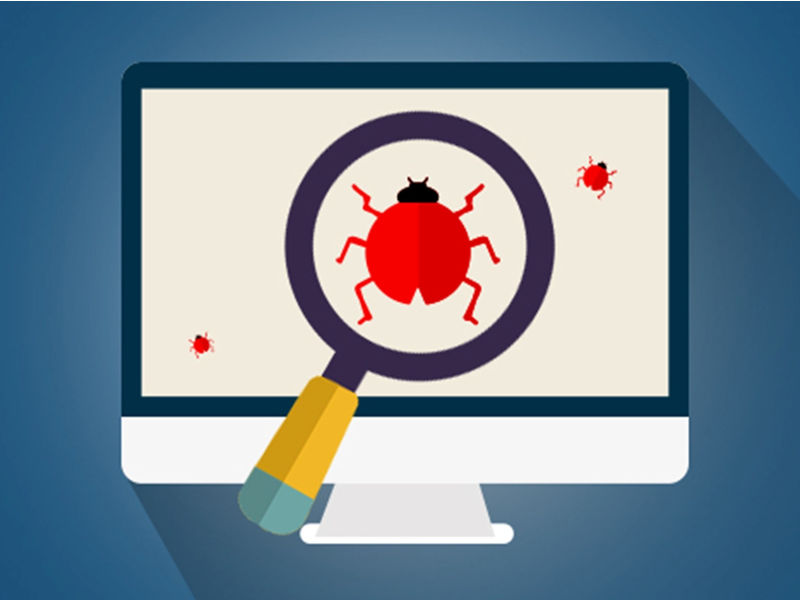Introduction
With the growing adoption of blockchain technology, ensuring the security and integrity of blockchain networks and applications has become crucial. Bug bounty hunting techniques play a vital role in identifying vulnerabilities and strengthening the security of blockchain systems. In this article, we will explore the techniques used by bug bounty hunters to enhance blockchain security and the challenges they face in this domain.
Understanding Bug Bounty Hunting

Bug bounty hunting refers to the practice of finding and reporting security vulnerabilities in software, systems, and networks. It is a proactive approach where organizations incentivize individuals or a community of security researchers, known as bug bounty hunters, to discover and report vulnerabilities in their systems. The primary purpose of bug bounty programs is to identify and mitigate potential security risks before malicious actors can exploit them.
Bug bounty programs have gained significant importance in recent years due to the increasing complexity of software and the rapid emergence of new technologies. They provide organizations with an additional layer of security by leveraging the collective knowledge and skills of a global community of security experts.
Bug bounty hunters play a crucial role in this ecosystem. They possess diverse technical skills and conduct comprehensive assessments of software and systems to identify potential vulnerabilities. By collaborating with organizations, bug bounty hunters contribute to making the digital world safer for everyone.
Bug Bounty Hunting Techniques
Bug bounty hunters employ various techniques to uncover security vulnerabilities in blockchain systems. Let’s explore some of the most common techniques used in bug bounty hunting for blockchain security.
1. Reconnaissance and Information Gathering
Bug bounty hunters begin their exploration by gathering information about the target blockchain system. They analyze publicly available resources, such as whitepapers, technical documentation, and source code repositories. This phase helps them gain a deeper understanding of the system’s architecture, protocols, and potential attack surfaces.
2. Static Analysis
Static analysis involves examining the source code of blockchain applications to identify potential vulnerabilities. Bug bounty hunters use various tools and techniques to analyze the code for common security issues, such as buffer overflows, injection attacks, or insecure cryptographic implementations. This approach helps uncover vulnerabilities that might be missed during runtime analysis.
3. Dynamic Analysis
Dynamic analysis involves observing the behavior of blockchain applications while they are running. Bug bounty hunters utilize tools and methodologies to interact with the blockchain system and trigger different scenarios to identify vulnerabilities. They simulate various attack vectors, monitor network traffic, and analyze the application’s responses to uncover potential security weaknesses.
4. Fuzzing and Fault Injection
Fuzzing is a technique where bug bounty hunters generate a large number of random or invalid inputs to test the robustness of the blockchain system. By injecting unexpected or malformed data, they aim to identify vulnerabilities caused by input validation failures or unexpected program behavior. Fault injection is a related technique where specific faults or errors are injected into the system to observe how it responds to such scenarios.
5. Code Review
Code review involves manually examining the source code of the blockchain application for potential vulnerabilities. Bug bounty hunters analyze the code for insecure coding practices, weak access controls, or improper handling of sensitive data. This technique requires a deep understanding of blockchain programming languages and security best practices.
6. Cryptography Analysis
Blockchain systems heavily rely on cryptographic algorithms and protocols for security. Bug bounty hunters analyze the cryptographic implementations used in the blockchain application to identify any weaknesses or vulnerabilities. They assess the proper usage of cryptographic primitives, key management practices, and encryption algorithms to ensure the integrity and confidentiality of blockchain data.
7. Smart Contract Auditing
Smart contracts are self-executing contracts with the terms of the agreement directly written into code. Bug bounty hunters specialize in auditing smart contracts to identify vulnerabilities that may lead to financial loss or exploitation. They analyze the contract code, review business logic, and assess potential attack vectors to ensure the smart contract behaves as intended and is resistant to malicious activities.
8. Network Analysis
Bug bounty hunters perform network analysis to gain insights into the communication protocols and data flow within the blockchain network. By monitoring network traffic and analyzing network packets, they can identify potential vulnerabilities, such as insecure data transmission or unauthorized access attempts. Network analysis helps in understanding the overall security posture of the blockchain system.
9. Social Engineering
Social engineering is a technique that involves manipulating individuals to gain unauthorized access or extract sensitive information. Bug bounty hunters may employ social engineering tactics to assess the human element of blockchain security. By attempting to deceive individuals within the organization, such as employees or administrators, they can uncover vulnerabilities arising from human error or lack of awareness.
10. Reverse Engineering
Reverse engineering involves dissecting and analyzing compiled software or firmware to understand its inner workings. In the context of blockchain security, bug bounty hunters may reverse engineer blockchain applications or client software to uncover hidden vulnerabilities, identify weak points in the code, or discover potential backdoors.
11. Penetration Testing
Penetration testing, also known as ethical hacking, involves simulating real-world attacks to assess the resilience of a system against malicious activities. Bug bounty hunters perform penetration testing on blockchain systems to identify vulnerabilities that could be exploited by attackers. By attempting to exploit the identified vulnerabilities, they help organizations identify and address security weaknesses before real-world attackers can leverage them.
12. Privacy and Anonymity Assessments
Privacy and anonymity are crucial aspects of many blockchain systems. Bug bounty hunters evaluate the privacy and anonymity features implemented within the blockchain network. They assess the effectiveness of cryptographic techniques, anonymity protocols, and privacy-enhancing measures to ensure that user identities and transaction details are adequately protected from unauthorized access.
13. Threat Modeling
Threat modeling involves identifying potential threats and vulnerabilities in a system and evaluating the associated risks. Bug bounty hunters utilize threat modeling techniques to assess the security posture of blockchain systems. They analyze the system’s architecture, components, and potential attack vectors to identify and prioritize potential threats. This helps organizations focus their security efforts on addressing the most critical vulnerabilities.
14. Exploit Development
Exploit development refers to creating or modifying software exploits to take advantage of identified vulnerabilities. Bug bounty hunters with advanced technical skills may engage in exploit development to demonstrate the impact of a vulnerability or to assist organizations in understanding the potential consequences of an attack. By developing exploits, they can provide concrete evidence and recommendations for remediation.
Challenges in Bug Bounty Hunting for Blockchain Security
While bug bounty hunting provides a valuable approach to enhancing blockchain security, it comes with its own set of challenges. Here are some common challenges faced by bug bounty hunters in the context of blockchain security.
Evolving Blockchain Technologies
Blockchain technologies are continuously evolving, introducing new features, protocols, and consensus mechanisms. Bug bounty hunters need to stay up to date with these advancements to understand the latest attack vectors and security considerations associated with different blockchain platforms.
Complex Smart Contracts
Smart contracts can be complex, with intricate business logic and potential vulnerabilities. Auditing and identifying vulnerabilities in smart contracts require a deep understanding of programming languages, blockchain protocols, and the specific domain of the contract.
Lack of Standardization
Blockchain platforms and protocols lack standardization, with different implementations and interpretations of the underlying technologies. Bug bounty hunters must adapt their techniques and approaches based on the specific blockchain ecosystem they are assessing, which adds complexity to their work.
Privacy and Anonymity Concerns
Blockchain systems often prioritize privacy and anonymity. This can make it challenging for bug bounty hunters to perform comprehensive assessments without compromising user privacy. Striking a balance between security and privacy is crucial in the bug bounty hunting process.
Best Practices for Bug Bounty Hunters
Bug bounty hunters can follow these best practices to enhance their effectiveness and contribute to improving blockchain security:
Stay Updated on Blockchain Technologies
To stay ahead in bug bounty hunting for blockchain security, it’s essential to keep abreast of the latest blockchain technologies, protocols, and vulnerabilities. Regularly attending conferences, participating in online communities, and reading research papers can help bug bounty hunters stay informed.
Develop Technical Skills
Bug bounty hunters should continuously develop their technical skills, including programming languages, blockchain platforms, and security assessment methodologies. By expanding their knowledge, bug bounty hunters can effectively identify vulnerabilities and propose appropriate remediation measures.
Understand Blockchain Architecture
A deep understanding of blockchain architecture and underlying technologies is crucial for bug bounty hunters. By understanding how the different components of a blockchain system interact, bug bounty hunters can identify potential vulnerabilities and propose targeted solutions.
Follow Responsible Disclosure Practices
Responsible disclosure is an important aspect of bug bounty hunting. Bug bounty hunters should responsibly report vulnerabilities to the organizations running the bug bounty programs, allowing them to address the issues before public disclosure. Following responsible disclosure practices helps maintain a collaborative and trust-based relationship between bug bounty hunters and organizations.
Collaborate with the Community
Bug bounty hunters should actively engage with the bug bounty community and collaborate with fellow researchers. Sharing knowledge, insights, and techniques can benefit the overall security landscape and promote continuous learning.
Bug Bounty Platforms and Programs
Various bug bounty platforms and programs cater to blockchain security. These platforms connect bug bounty hunters with organizations seeking to enhance their blockchain security posture. Some well-known bug bounty platforms include HackerOne, Bugcrowd, and Cobalt.
Several blockchain projects and organizations also run their bug bounty programs to invite external security researchers to assess their systems. Examples of prominent bug bounty programs for blockchain security include Ethereum Bug Bounty, EOS Bug Bounty, and Tezos Bug Bounty.
Rewards and Recognition
Bug bounty programs offer rewards and recognition to bug bounty hunters who discover and report valid vulnerabilities. Rewards can range from monetary compensation to recognition on hall of fame pages or even future job opportunities. Acknowledgment and reputation building within the bug bounty community are significant benefits for bug bounty hunters.
Conclusion
Bug bounty hunting techniques play a crucial role in enhancing blockchain security. Bug bounty hunters employ various techniques, including reconnaissance, static and dynamic analysis, fuzzing, code review, cryptography analysis, and smart contract auditing. However, they face challenges such as evolving technologies, complex smart contracts, lack of standardization, and privacy concerns. By following best practices, staying updated on blockchain technologies, and collaborating with the community, bug bounty hunters can contribute to making blockchain systems more secure.






